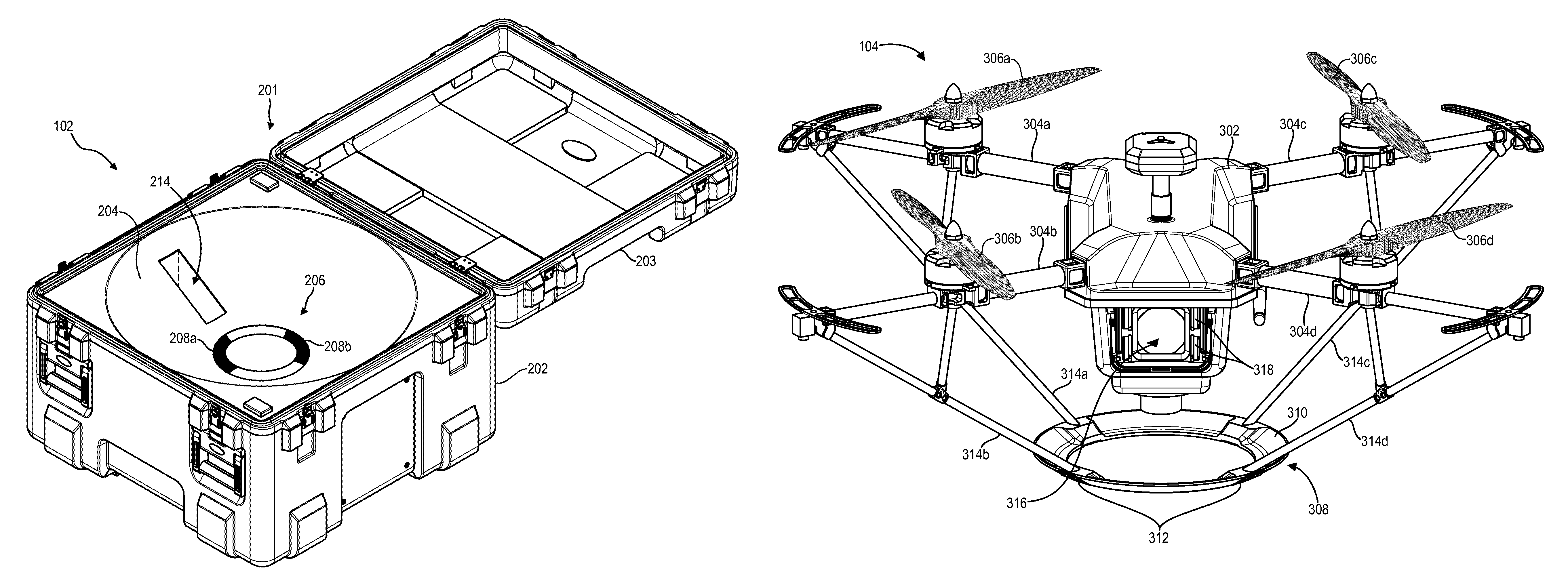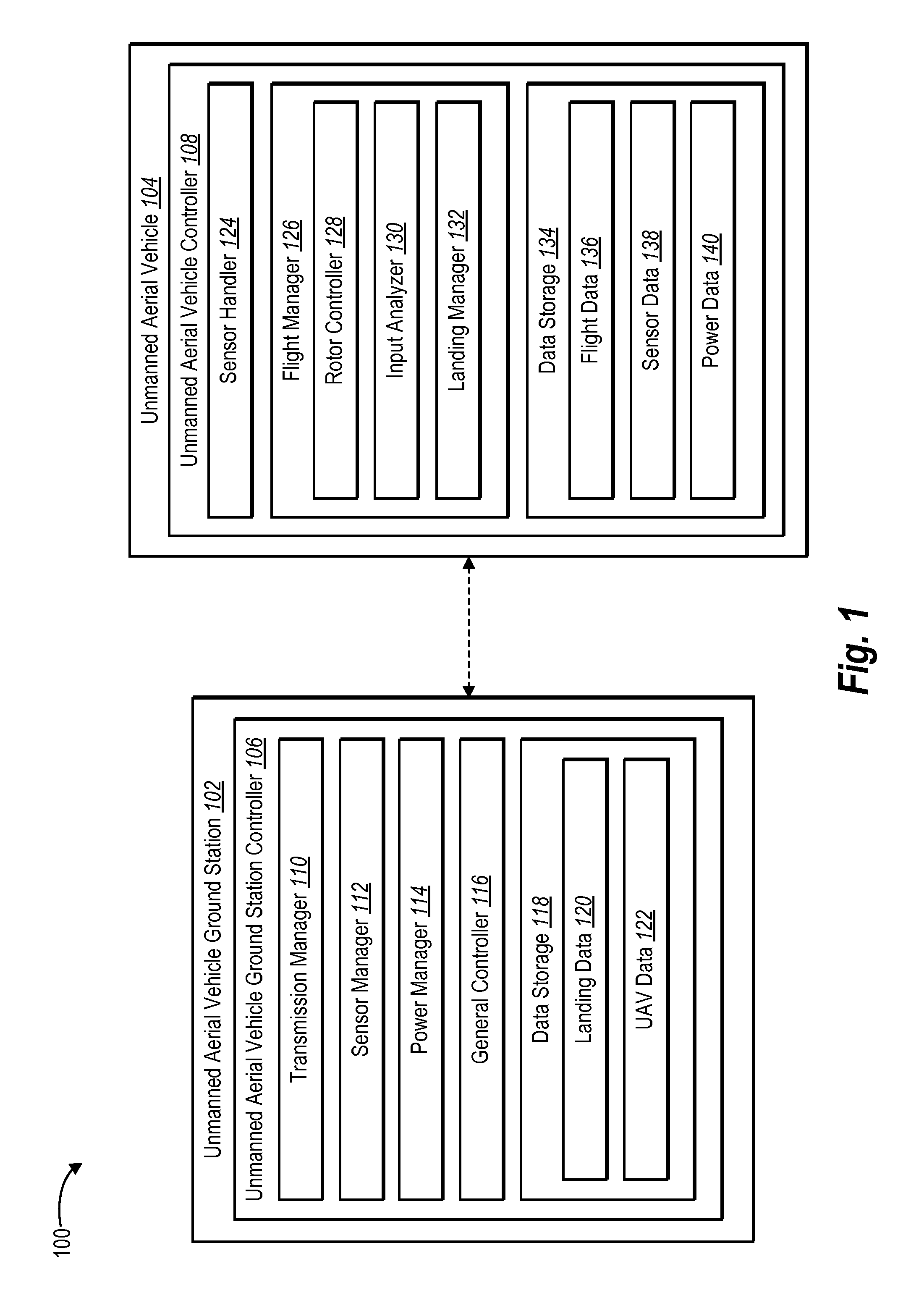Unmanned aerial vehicle landing interface
a technology for unmanned aerial vehicles and landing interfaces, which is applied in the direction of aircraft, arresting gear, transportation and packaging, etc., can solve the problems of not allowing the operator to maintain and affecting the operation of the unmanned aerial vehicle. , to achieve the effect of convenient interfa
- Summary
- Abstract
- Description
- Claims
- Application Information
AI Technical Summary
Benefits of technology
Problems solved by technology
Method used
Image
Examples
Embodiment Construction
[0025]One or more embodiments described herein include an autonomous landing system. For example, the autonomous landing system described herein manages an autonomous landing of a UAV in connection with a UAVGS. The autonomous landing system described herein includes components that enable a UAV to autonomously land within a landing housing of a UAVGS. For example, in one or more embodiments, an autonomous landing system includes a UAV having a main body, one or more rotors coupled to the main body, and a landing base coupled to the main body. Additionally, the autonomous landing system can include a UAVGS that includes a landing housing that receives the UAV when the UAV lands within the UAVGS. In one or more embodiments, the landing base has a size and shape that enables the UAV to land within a complimentary-shaped landing housing of the UAVGS and interface with one or more components of the UAVGS.
[0026]In one or more embodiments, the autonomous landing system includes a self-ali...
PUM
 Login to View More
Login to View More Abstract
Description
Claims
Application Information
 Login to View More
Login to View More - R&D
- Intellectual Property
- Life Sciences
- Materials
- Tech Scout
- Unparalleled Data Quality
- Higher Quality Content
- 60% Fewer Hallucinations
Browse by: Latest US Patents, China's latest patents, Technical Efficacy Thesaurus, Application Domain, Technology Topic, Popular Technical Reports.
© 2025 PatSnap. All rights reserved.Legal|Privacy policy|Modern Slavery Act Transparency Statement|Sitemap|About US| Contact US: help@patsnap.com



